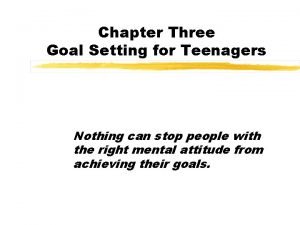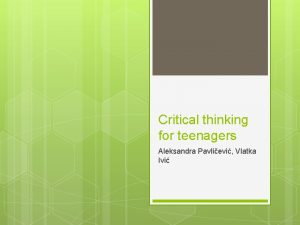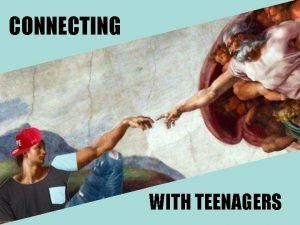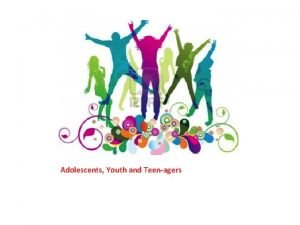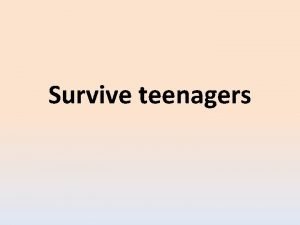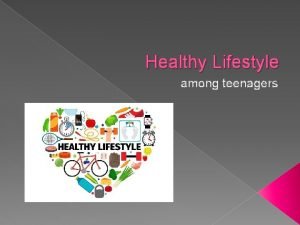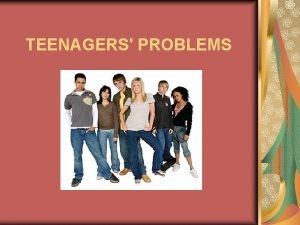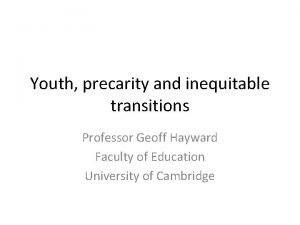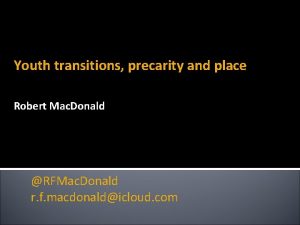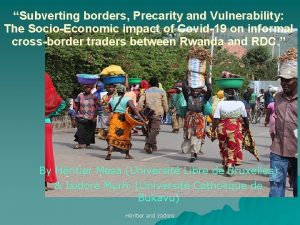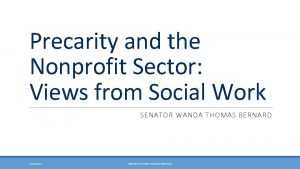Energy precarity on children and teenagers Energy precarity














- Slides: 14

Energy precarity on children and teenagers

Energy precarity or energy poverty? Energy prices Opacity/abusiv e conditions Household vulnerability Supply management Housing Access Lack of energy efficiency in buildings It is difficult to measure energy poverty: different behaviours (insecurity, cold, debt)…

Do we need household energy efficiency? Low energy consumption in vulnerable neighbourhoods Domene, E. , Garcia-Sierra, M. (2017). El funcionament del sistema metropolità. Cap a una transició sociometabòlica. Institut d’Estudis Regionals i Metropolitana de Barcelona.

Objectives Methodology To deepen the analysis of energy precariousness investigating its consequences in groups at risk of vulnerability. Review of the existing evidence and data To propose specific public measures/policy to fight energy precarity on children and teenagers. Collect and strengthen the voice of the households in an energy precarity situation. Interviews with families in an energy precarity situation and professionals working with children Workshops at schools/ Collective assemblies Population 0 -17

There is not much evidence on the impacts of energy precarity on children and teenagers Measures to combat energy poverty do not consider –generally- children as a specific group of rights Public authorities must make rights effective during childhood and adolescence, as well as consider the best interests of children in the generation of public policies.

Moderate poverty rate before and after social transfers Dades d’infància i adolescència a la ciutat de Barcelona 2018

Poverty reduction effect after social transfers Marí-Klose, 2012.

Population 0 -17 living in homes without adequate temperatures 3, 5% 16, 3 % 6, 2% 25, 4 % 32, 3 % 12, 4 % 13, 4 % Dades infància I adolescència a Barcelona, 2019 Pobresa i infàncies desiguals a la ciutat de Barcelona , dades de l’Enquesta Sociodemogràfica de Barcelona, 2017.

Population 0 -17 living in homes with arrears on supply bills 7, 5% 10, 7 % 7, 5% 28, 7 % 12% 6, 6% 16, 4 % 27, 3 % 15, 5 % Dades infància I adolescència a Barcelona, 2019 Pobresa i infàncies desiguals a la ciutat de Barcelona , dades de l’Enquesta Sociodemogràfica de Barcelona, 2017.

Impacts of energy precarity on children and teenagers • Asthma, bronchitis • Recurrent illness • Nutrition • Bullying • Absenteeism • Difficulties for home study • Stigma • Guilt feelings • Social relations • Family stress Physical Health Mental Health Educatio n Security • Electrocution • Fire • Uncertainty • Emotional security

Security: irregular connections Alliance against Energy Poverty’s survey: among 160 families with irregular connections, 145 minors. Strongly criminalising discourse towards these families, generated by some falsehoods around the irregular suplies: • only 1% of what the companies call"electrical fraud" comes from vulnerable famílies • Most of the families in a situation of occupation would like to regularize the supply and pay for the service. Energy needs involved in the tasks of care and support of life are especially present and necessary in the daily lives of children. Families will seek ways to provide energy services even if they are unsafe and it is urgent to reverse this situation.

Public measures Broaden the detection Urgent measures to reduce energy precarity on children Promote energy rights during childhood • Coordination of children-related institutions • School and primary healthcare detections protocols • No power cuts in homes with minors • Adequate (and non paternalising) social transfers • Workshops, debates, education in energy rights • Consider children and teenagers as active citizens

Energy as a human right: collective and democratic control of energy • Sustainable/local energy source • Not fossil fuels • Not big extractivist projects From where? For what/ For who? • Prioritize social, care and reproductive needs • Prioritize energy for people, not only industries/production • Democratic ownership and management • Energy communities • Collective/public ownershipe Controlled by whom? Energy for life and not for profit: ecofeminism perspective.

Final thoughts If from the perspective of children's rights we think we must provide universal education and health, and energy precarity violates both, why shouldn't we think of a dignified habitability that includes enough water and energy not to compromise their physical and mental health? In what way do we expect equality of opportunity to work if within the basic provisions for children we are not incorporating basic supplies and residential security? It is necessary to ensure the active participation of children in the definition of public policies. It is also urgent that we, as a society, abandon individualistic positions that link the fate of children to the material conditions of the adults with whom they live, and that we collectively take up the challenge of real equality of opportunity.
 Communication between parents and teenagers
Communication between parents and teenagers How does tragic love affect teenagers today
How does tragic love affect teenagers today How does tragic love affect teenagers today?
How does tragic love affect teenagers today? Short term teenage goals
Short term teenage goals Short term goals for teenagers
Short term goals for teenagers Why teenagers smoke
Why teenagers smoke Critical thinking for teenagers
Critical thinking for teenagers Give two piece of advice to avoid computer addiction
Give two piece of advice to avoid computer addiction Nn teenz
Nn teenz Swag teenagers
Swag teenagers Teenagers should be allowed to read
Teenagers should be allowed to read Teenagers anxiety friend
Teenagers anxiety friend Suppose twin teenagers are vying
Suppose twin teenagers are vying Are teenagers going deaf? in a study of 3000
Are teenagers going deaf? in a study of 3000 Energy energy transfer and general energy analysis
Energy energy transfer and general energy analysis




